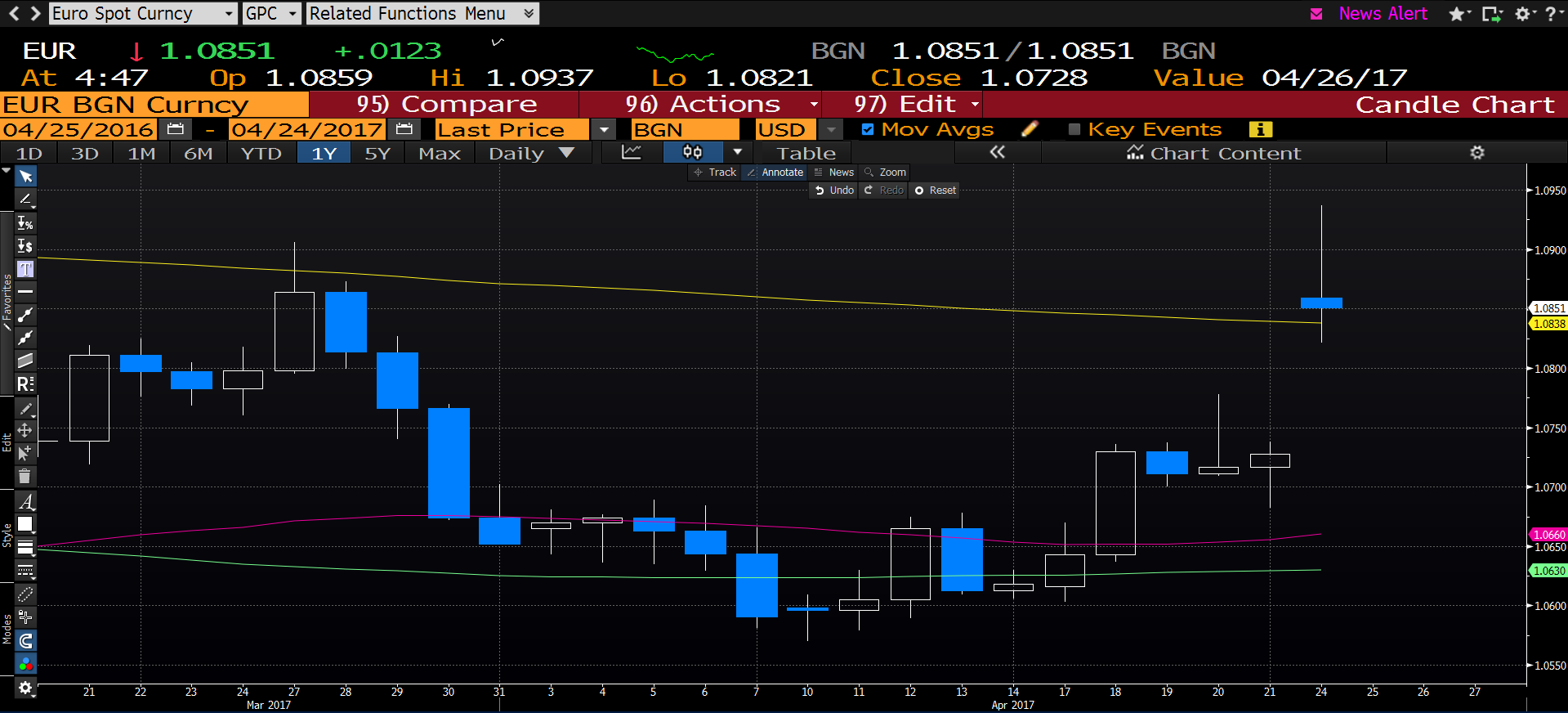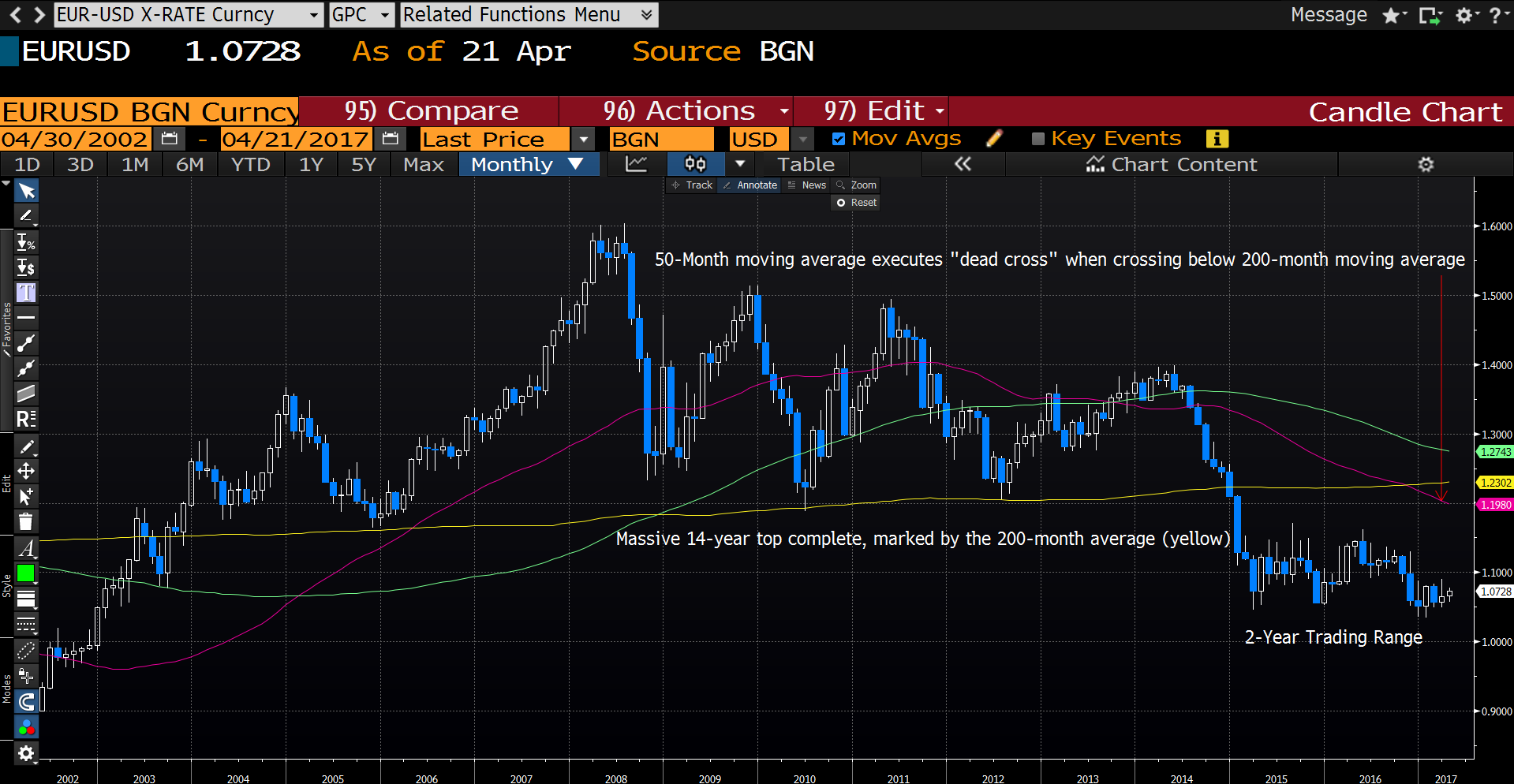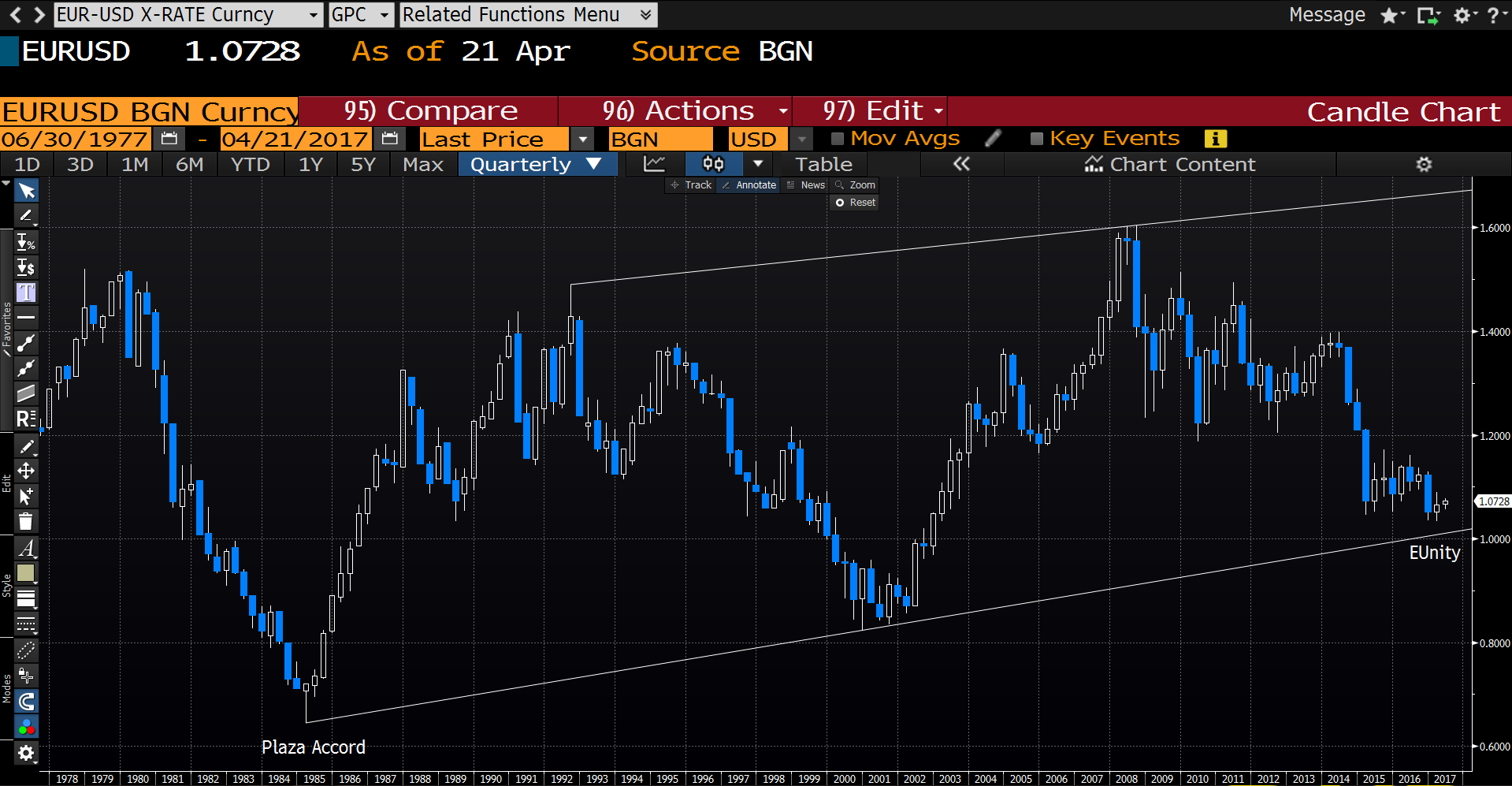by Pinchas Cohen

On the heels of the Marine Le Pen / Emmanuel Macron victories in the first round of France's presidential elections, the euro has advanced with a bullish rising gap, currently trading at 1.0861. So far, it has failed to move above its previous peak on March 27, of 1.0906. While it is, as of now, holding above the 200-day moving average, which has acted as a resistance since the US election, today’s trading pattern formed a high-wave candle, a Japanese candlestick that reflects more than mere uncertainty of direction but fear and even panic. This trading pattern puts the current move in question.
Earlier today we wrote:
Today's trading pattern formed a high-wave candle, a Japanese candlestick that reflects more than mere directional uncertainty. It also signals fear and even panic. This puts the current move into question.
Additionally, in yesterday's 'Week Ahead' post we described the effect a Le Pen victory could have on the euro if she wins in the second round of voting, which is scheduled for Sunday, May 7:
Brexit and Trump sent the euro falling 4.8% and 4.5% respectively. Should Le Pen...win, we might expect the euro to fall at least that much. That would send the euro below 1.03.
Should the euro reach that low, it would create a downside breakout of a two-year trading range. Its technical implication is a movement that repeats the height of the current pattern, which roughly ranged between the price levels of 1.15 and 1.05, a thousand pips.
To see that play out more clearly, on January 2015, the EURUSD completed a massive near-14 year top, as it crossed below the 200-month average, marking the support of the multi-year top.
The fundamentals then were three-fold:
- Dollar Strength: The US economy grew 5% in the third quarter and created jobs accordingly. This allowed the FED to end QE and to begin talking about reintroducing interest rates into the financial world.
- Euro Weakness: The eurozone, on the other hand, had unemployment at record highs, with a stagnant economy and a growing risk of deflation. While the FED ended QE the ECB was about to launch it.
- Greek elections on January 25 stood to revive the eurozone debt crisis and a possible Grexit.
Sound familiar?

When this macro top was completed, it created the potential of a mirror image to the downside. The slide from the top took with it 25% of the currency’s value, from a peak of 1.6000 in 2008, before the financial crisis, followed by a rush to the dollar as a safe haven currency, to the bottom of the range, at 1.2000, which was cleared away on January 2015.

Since 1985, the EURUSD has been trading within a macro rising channel. The fundamentals that propelled this rise was the Plaza Accord, in which world leaders united to lower the dollar to ensure global financial stability.
The last time the pair reached the bottom of this rising channel was on 2001. Should the earlier projection pan out, the pair will be pushed out of a 32 year-old orbit. The next support would be the low of 2001, nearing the 0.8000 price level.
In other words, if Le Pen bucks the general consensus and beats Macron in the second round to become France's next president, stunned markets could react violently by sending the euro back to its earlier lows.
